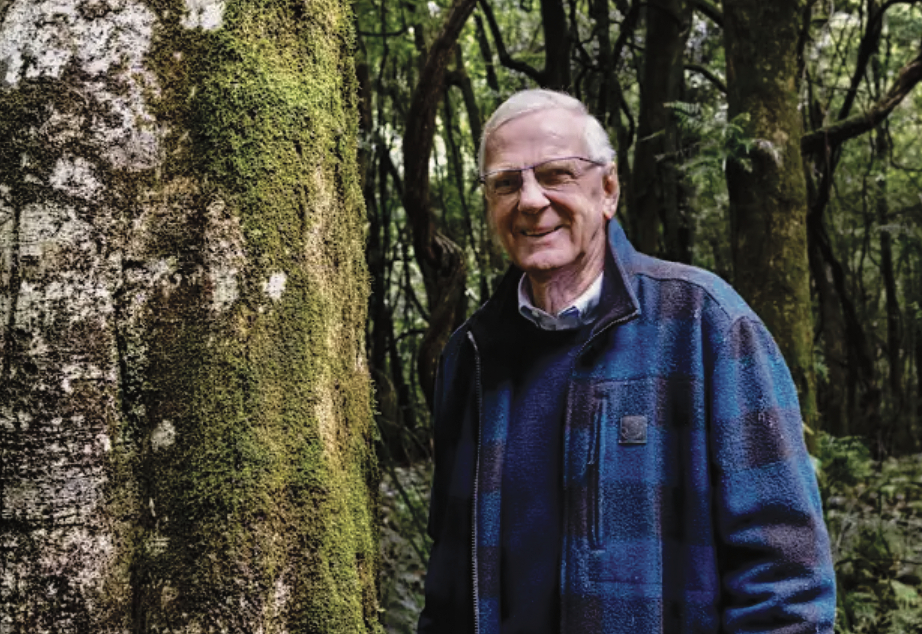Smaller dwellings equals more affordable housing, developer urges Council
Paul Suttor
15 July 2025, 3:00 AM
 Neville Fredericks. Photo: Craig Edmond
Neville Fredericks. Photo: Craig EdmondFountaindale developer Neville Fredericks is calling on Kiama Council to provide a pathway for more affordable housing through the provision of smaller dwellings.
The former Kiama Mayor addressed the Public Access Meeting on Monday night to air his thoughts on the Housing Strategy (Draft v2) and said that outside of social housing, the most effective way of delivering affordable options is by reducing the size of the dwellings.
“To really do that well, you need to have good urban structure that's designed for smaller housing, not just reducing the lot sizes,” he said, “so you can deliver a high-quality outcome where people will actually want to visit.
“Australia has been on this trajectory of building bigger and bigger houses. In 1960, the average new house size was 120 metres, and there were 3.6 people per household in 1960.
“Today, there are 2.4 people per household, and we now have the largest houses in the world, new house built, at 240 metres.
“So if you do the math, to house one person today compared to 1960, you need three times the floor space, and that's one of the fundamental issues for affordability.
“Our houses are too big, and we're not providing a diverse housing choice.”
He added that this was a fundamental piece of the housing puzzle.
“You cut the size of the house in half, it's less costly to heat and maintain, it's less costly to build and buy,” he said.
“So if we're really going to seriously consider the people who are so badly disadvantaged by our current housing shortage, we have to enable smaller housing to be built.
“In the past, I know as a developer I have to say whenever we tried to build smaller housing somewhere, we were attacked publicly for reducing standards, but we've really got to overcome that.
“This is where we need political leadership to say, OK, when small housing has been done in the past, it's often been poor quality. How do we do better quality and high quality, smaller product? That's the solution as we see it.”
Fredericks reiterated that he wanted to see growth in Jamberoo where Fountaindale’s Golden Valley development can deliver much-needed housing to the village.
“It needs growth to support the existing businesses and to expand the range of services that are provided to local residents,” he said.
“Now, this is really a cornerstone of genuine sustainability. It's the provision of local goods and services for residents. And the other element of this is, with what we're proposing at Golden Valley, is a wider range of housing typologies to bring to the market.
“If you look at NSW, 35% of all dwellings are other than freestanding homes. In Jamberoo, 3% of dwellings are other than freestanding homes.
“So the downsizers who want low maintenance, the singles, the renters, the young starters, just don't have the product that's necessary. And this is the core of the housing market.
“It's not just in volume of houses. It's the range of houses that right across the board, that we haven't been providing for the marketplace, in particular in regional NSW.”
He added that developers face significant challenges in delivering diversity in housing due to current regulations that are “a hiding to nowhere”.
Fredericks said they had achieved success in Tullimbar Village after working with Shellharbour City Council on a Development Control Plan
“We're proposing to achieve what we're intending to deliver is that 50% of new dwellings at Golden Valley 2 to be diverse housing,” he said.
“We're proposing that Council consider allowing us or welcoming us to write a draft DCP that would enable this,” he added while offering the services of the former head of the Urban Design Unit for Victoria to assist in writing a draft which would then be put to the community for a final decision on whether it should proceed.
Fredericks said there is a rapid movement worldwide from globalisation back to nationalisation and localisation.
He said major changes are on the horizon like the end of oil being used as a primary fuel source in the next couple of generations and that “we have to start preparing for quite a different society to what we've all grown up in.
“We should move to strengthen our local communities. And that's what I'm asking for your active consideration to purposefully look at how we build that resilience at a local level, reduce transit demand and develop a wider range of more diverse housing choices for our local people and local employment opportunities.”
NEWS




